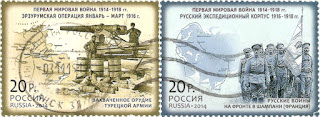 |
| 2504 A view of the Murmansk |
Murmansk is a port city located in the extreme northwest part of Russia, on the Kola Bay, an inlet of the Barents Sea on the northern shore of the Kola Peninsula, close to the Russia's borders with Norway and Finland. Despite its extreme northern location above the Arctic Circle, Murmansk is in many ways similar to other Russian cities of its size, with highway and railway access to the rest of Europe, and the northernmost trolleybus system on Earth.
 |
| 2504 A view of the Murmansk (1) |
Murmansk was the last city founded in the Russian Empire. In 1915, WWI needs led to the construction of the railroad from Petrozavodsk to an ice-free location on the Murman Coast in the Russian Arctic, to which Russia's allies shipped military supplies. The terminus became known as the Murman station and soon boasted a port, a naval base, and an adjacent settlement with a population which quickly grew in size and soon surpassed the nearby towns of Alexandrovsk and Kola.
 |
| 2504 A view of the Murmansk (2) |
In 1916, the railway settlement received the urban status, being named Romanov-na-Murmane (Romanov-on-Murman), after the royal Russian dynasty of Romanovs. On September 21 (O.S. October 4) 1916, the official ceremony was performed, and the date is now considered the official date of the city's foundation. After the February Revolution of 1917, the town was given its present name. From 1918 to 1920, during the Russian Civil War, the town was occupied by the Western powers, who had been allied in WWI, and by the White Army forces.
 |
| 2504 A view of the Murmansk (3) |
During WWII, Murmansk was a link to the Western world for the Soviet Union with large quantities of goods important to the respective military efforts traded with the Allies: primarily manufactured goods and raw materials into the Soviet Union. German forces in Finnish territory launched an offensive against the city in 1941 as part of Operation Silver Fox, and Murmansk suffered extensive destruction, but it wasn't conquered. For the rest of the war, it served as a transit point for weapons and other supplies entering the Soviet Union from other Allied nations.
During the Cold War Murmansk was a center of Soviet submarine and icebreaker activity. After the dissolution of the Soviet Union, the nearby city and naval base of Severomorsk remains the headquarters of the Russian Northern Fleet. In 1974, a massive 35.5m tall statue Alyosha, depicting a Russian World War II soldier, was installed on a 7m high foundation. Although its population is in decline (from 468,039 in 1989 to 299,148 in 2014), Murmansk remains the largest city north of the Arctic Circle.
About the stamps
The stamps are part of the series The history of the First World War, issued on August 6, 2014:
• Osovets
• Brusilov offensive
• Russian Expeditionary Force - It's on the postcard 2504
• Erzurum operation - It's on the postcard 2504
References
Murmansk - Wikipedia
Sender: Olga Sumatova
Sent from Murmansk (Murmansk Oblast / Russia), on 03.11.2015
Photo and design: Mikhail Slavin





No comments:
Post a Comment